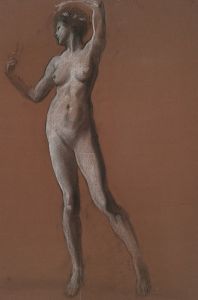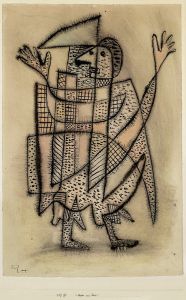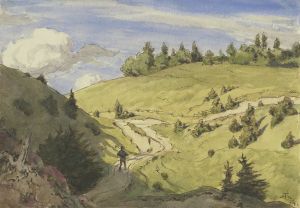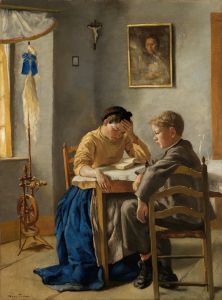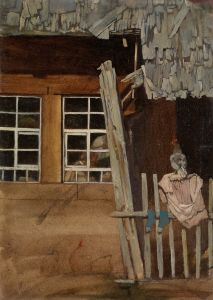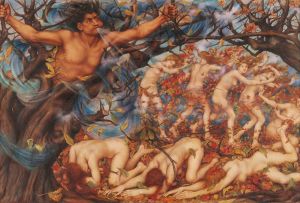
Chronos sharpens the scythe
A hand-painted replica of Hans Thoma’s masterpiece Chronos sharpens the scythe, meticulously crafted by professional artists to capture the true essence of the original. Each piece is created with museum-quality canvas and rare mineral pigments, carefully painted by experienced artists with delicate brushstrokes and rich, layered colors to perfectly recreate the texture of the original artwork. Unlike machine-printed reproductions, this hand-painted version brings the painting to life, infused with the artist’s emotions and skill in every stroke. Whether for personal collection or home decoration, it instantly elevates the artistic atmosphere of any space.
"Chronos Sharpens the Scythe" is a painting created by the German artist Hans Thoma in 1883. Hans Thoma (1839–1924) was a prominent figure in 19th-century German art, known for his works that often combined elements of realism, symbolism, and romanticism. He was heavily influenced by the landscapes of his native Black Forest region, as well as by the works of earlier German masters like Albrecht Dürer.
The painting depicts Chronos, the personification of time in Greek mythology, sharpening a scythe. The scythe is a traditional symbol associated with time and mortality, often linked to the concept of the "Grim Reaper." In this work, Thoma portrays Chronos in a contemplative and somber manner, emphasizing the inevitability of time and its connection to the cycle of life and death. The figure of Chronos is set against a serene natural backdrop, a hallmark of Thoma's style, which often integrated mythological themes with idyllic landscapes.
"Chronos Sharpens the Scythe" reflects Thoma's interest in exploring universal themes such as the passage of time and the transient nature of human existence. The painting's composition and muted color palette evoke a sense of quiet introspection, inviting viewers to reflect on the deeper meanings of time and mortality.
The artwork is considered one of Thoma's significant contributions to 19th-century art and is often cited as an example of his ability to merge mythological symbolism with a distinctly Germanic aesthetic. Today, the painting is housed in the Staatliche Kunsthalle Karlsruhe, a museum in Karlsruhe, Germany, which holds an extensive collection of Thoma's works.
Hans Thoma's legacy as an artist lies in his ability to blend traditional techniques with personal and philosophical themes, making his works resonate with audiences both in his time and in the present day.







